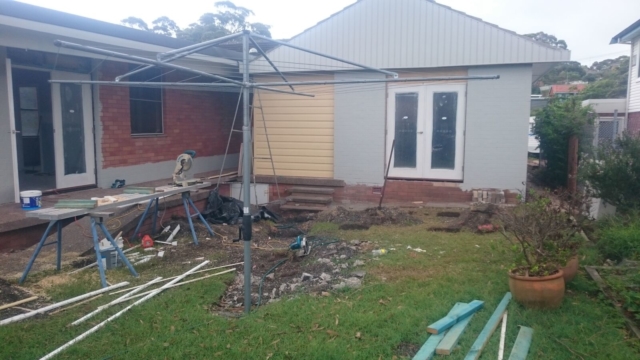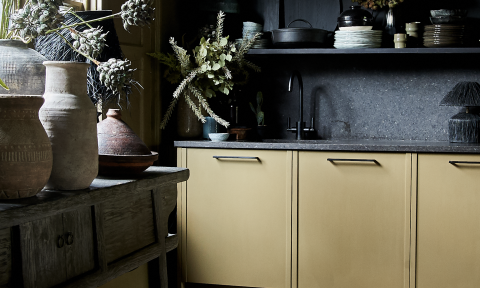By Naomi Findlay
Before guests step foot inside your home, what is the first thing they see? If the answer is a façade covered in flaking paint or last century’s colour scheme, it may be prime time for a paint redo. A few fresh coats can give your home some serious curbside appeal – but before you run off to Bunnings, you need to take the time to prepare.
Preparing the exterior surface of your home is crucial. Considering the type of surface and surrounding environment will ensure beautiful, long lasting results. This pre-painting stage should take around half a day per wall – depending on whether you will be applying fillers.


Clear the area
Before you start cleaning, caulking or sanding, make sure any potential obstacles are removed. The last thing you want to do is position a ladder precariously far away from the actual walls because of a pot plant. Remove any pot plants, garden hoses and other transportable items that are blocking access to the exterior. There is no need to dig up shrubs or trees, though – simply cover them with drop cloths or rags to avoid damage. Plastic drop sheets are perfect for any delicate flowers (not to mention very budget-friendly). Use painter’s tape on window frames and trim to protect them from paint splatter.
Clean the walls
Once all obstacles have been removed or secured, use a sponge and some warm soapy water (or sugar soap) to give the walls a good rinse. A home’s exterior tends to attract a lot more dirt than the interior walls, so you need to ensure any stubborn dirt, dust and spider webs are cleared before the paint goes on. Pay particular attention to any mould, usually found lurking in dark corners that aren’t exposed to light very often. Give any mouldy areas special treatment using a mix of bleach and water, letting the bleach do its work for 15 minutes. Finish off with a thorough hose down to remove any soapy residue.

Sand and fill blemishes
Once the walls have dried, assess the existing paint for any peeling or flaking. A good way to test the existing paint for adhesion is to cut a small ‘X’ through the old paint. Apply painter’s tape firmly over the ‘X’, then rip it off quickly; if the old paint comes off, it needs to be removed entirely prior to repainting. If not, you can move on to touching up blemishes and gaps.
Use a scraper to scrape down any flaking areas of loose paint. Fill any dents or nail gaps with a premixed filler, and use an acrylic gap sealant for any cracks where there might be movement (such as near doors or windows). Make sure you use paintable sealants (not silicone!) on areas you plan to paint – otherwise you will end up with paint that doesn’t stick to the wall and starts to peel. Once all the sealants and fillers have dried, give the entire exterior a light sand. The aim is to produce a clean, smooth finish ready for fresh paint to adhere to – so pay particular attention to any shiny spots when sanding.
Finish off the preparation with an undercoat primer and get ready to paint!
NEXT WEEK: How to paint your newly prepped exterior!
–Naomi Findlay is Australia’s rapid renovation expert, an internationally renowned renovator, award-winning property stylist and speaker. She’s an industry leader in creating healthy wealthy spaces and creating wealth and profit from renovating property. Naomi is founder of the Rapid Reno Mate app, CEO of staging company Silk Home and founder and principal of education provider, the International Institute of Home Staging (IIHS).









